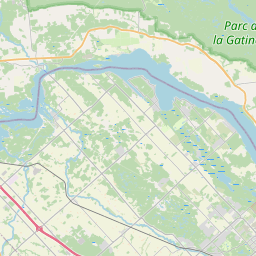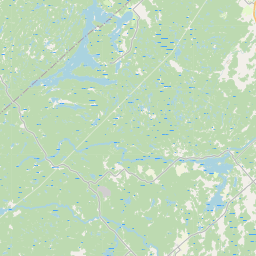Milestones:First Demonstration of a Fibre Bragg Grating, 1978
Title
First Demonstration of a Fibre Bragg Grating, 1978
Citation
In 1978, researchers at the Communications Research Centre Canada were the first to observe photo-induced change of refractive index in glass optical fibres and demonstrate writing permanent refractive index gratings that act as very selective optical filters. Fibre Bragg Gratings of this type are easily integrated into fibre optic systems and have revolutionized the design of optical communications and sensor systems.
Street address(es) and GPS coordinates of the Milestone Plaque Sites
Communications Research Centre (CRC) Canada, 3701 Carling Avenue, Ottawa (Nepean), Ontario K2K 2Y7, Canada, (Coordinates: 45.345196, -75.880435 ), Communications Research Centre (CRC) Canada, 3701 Carling Avenue, Ottawa (Nepean), Ontario K2K 2Y7, Canada, (Coordinates: 45.345196, -75.880435 )
Details of the physical location of the plaque
The plaques in two Canadian official languages, English and French, will be mounted outside of the CRC building so that they are easily accessible to the public.
How the plaque site is protected/secured
The Communications Research Centre (CRC) Canada is an agency of the Government of Canada and has on-site security. The site is accessible to the public by public and private transportation and on foot.
Historical significance of the work
In 1978, CRC researchers were the first to observe photosensitivity (photo-induced change of refractive index) in glass optical fibres and demonstrate that the phenomenon can be used to write permanent refractive index gratings that act as very selective in-line optical filters.
- The work prompted many other inquiries into the cause of the photo-induced change of refractive index, i.e., photosensitivity, and its dependence on the wavelength of the light.
- The Fiber Bragg Gratings that can be fabricated using this technique act as very selective optical filters and have since played an important role in optical communications and sensor systems.
Prior to this discovery, it was very difficult to fabricate high-quality fiber-compatible optical filters. The Fiber Bragg grating addressed this limitation handily.
The literature, e.g., [6], acknowledges that "Much additional work by many individuals took place before FBGs became a commercial reality." However, Hill et al's discovery is widely acknowledged to be the origin of this important optical technology.
This pioneering work has been widely recognized by the optics profession:
- In 1991, Hill was elected to Fellowship in the Optical Society of America (OSA) for his efforts pertaining to fused fiber optical couplers, photosensitivity in fibers, novel fiber-based devices and nonlinear effects in fibers.
- Hill was the 1995 recipient of the Manning Principal Award for the discovery of photosensitivity in optical fibers as well as the many commercial applications his work led to.
- At the 1996 Optical Fiber Communications Conference, Hill was awarded the John Tyndall Award sponsored by the Institute of Electrical and Electronics Engineers (IEEE), the Lasers and Electro-Optics Society (LEOS) and the Optical Society of America. The award was presented for the discovery of photosensitivity in optical fibers and its application to Bragg gratings used in device applications in optical communications and sensor systems."
- In 1998, Hill was awarded the inaugural Medal for Outstanding Achievement in Applied Photonics from the Canadian Association of Physicists (CAP) and the National Optics Institute (INO).
- Hill was also awarded the Rank Prize in Optoelectronics in 2002 as one of four scientists recognized for creating and developing Fiber Bragg gratings.
Features that set this work apart from similar achievements
The literature, e.g., [6], acknowledges that "Much additional work by many individuals took place before FBGs became a commercial reality." However, Hill et al's discovery is widely acknowledged to be the origin of this important optical technology.
Significant references
[1] K. O. Hill, Y. Fujii, D. C. Johnson, and B. S. Kawasaki, “Photosensitivity in optical fiber waveguides: Application to reflection filter fabrication,” Appl. Phys. Lett., vol. 32, no. 10, pp. 647–649, 1978. Google Scholar: Cited by 2971.
[2] B. S. Kawasaki, K. O. Hill, D. C. Johnson, and Y. Fujii, “Narrow-band Bragg reflectors in optical fibers,” Opt. Lett., vol. 3, pp. 66–68, 1978. Google Scholar: Cited by 283.
[3] G. Meltz, W. W. Morey, and W. H. Glenn, “Formation of Bragg gratings in optical fibers by a transverse holographic method,” Opt. Lett., vol. 14, pp. 823–825, 1989. Google Scholar: Cited by 2657.
[4] K. O. Hill, B. Malo, F. Bilodeau, D. C. Johnson, and J. Albert, “Bragg gratings fabricated in monomode photosensitive optical fiber by UV exposure through a phase mask,” Appl. Phys. Lett., vol. 62, no. 10, pp. 1035–1037, 1993. Google Scholar: Cited by 1396.
[5] K. O. Hill and G. Meltz, “Fiber Bragg Grating Technology Fundamentals and Overview”, Journal of Lightwave Technology, vol. 15, no. 8, pp. 1263 – 1276, August 1997. Google Scholar: Cited by 2928.
[6] J. W. Goodman, “Introduction to Fourier Optics”, Roberts and Company Publishers; 3rd Edition, Dec. 2004. Google Scholar: Cited by 23635. (W H Freeman & Co; 4th Edition, May 1 2017)
[7] S. M. Link, D. J. H. C. Maas, D. Waldburger, U. Keller, “Dual-comb spectroscopy of water vapor with a free-running semiconductor disk laser”, Science, vol. 356, no. 6343, pp. 1164–1168, 16 June 2017. Google Scholar: Cited by 91.
[8] A. Halstuch, A. Shamir, and A. A. Ishaaya, “Femtosecond inscription of fiber Bragg gratings through the coating with a Low-NA lens”, Optics Express, vol. 27, no. 12, pp. 16935-16944, 2019. Google Scholar: Cited by 91.
[9] Fiber Bragg Grating, Wikipedia https://en.wikipedia.org/wiki/Fiber_Bragg_grating
Supporting materials
see references
Map












